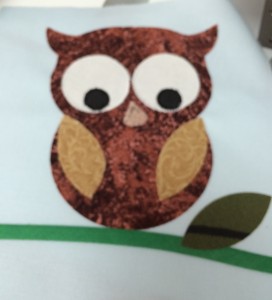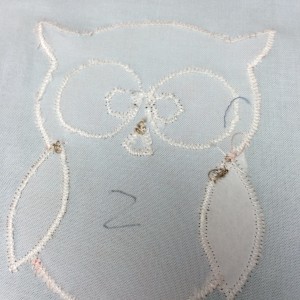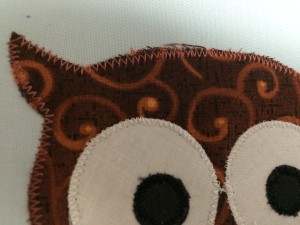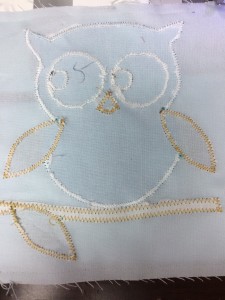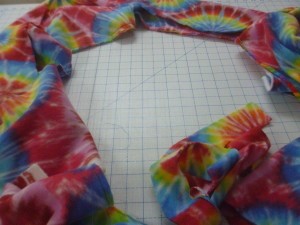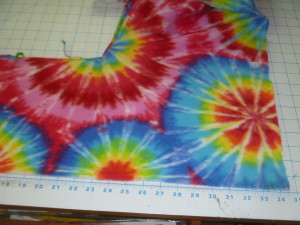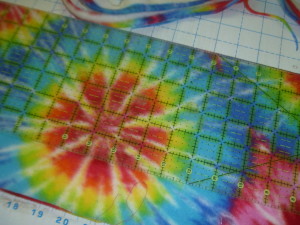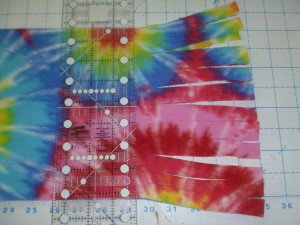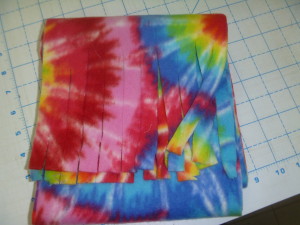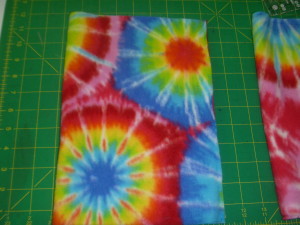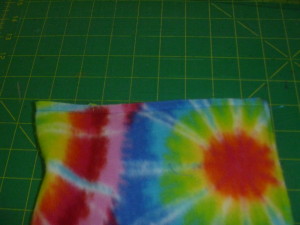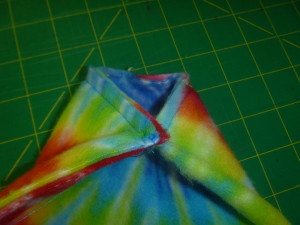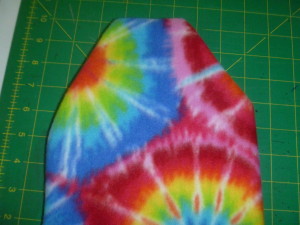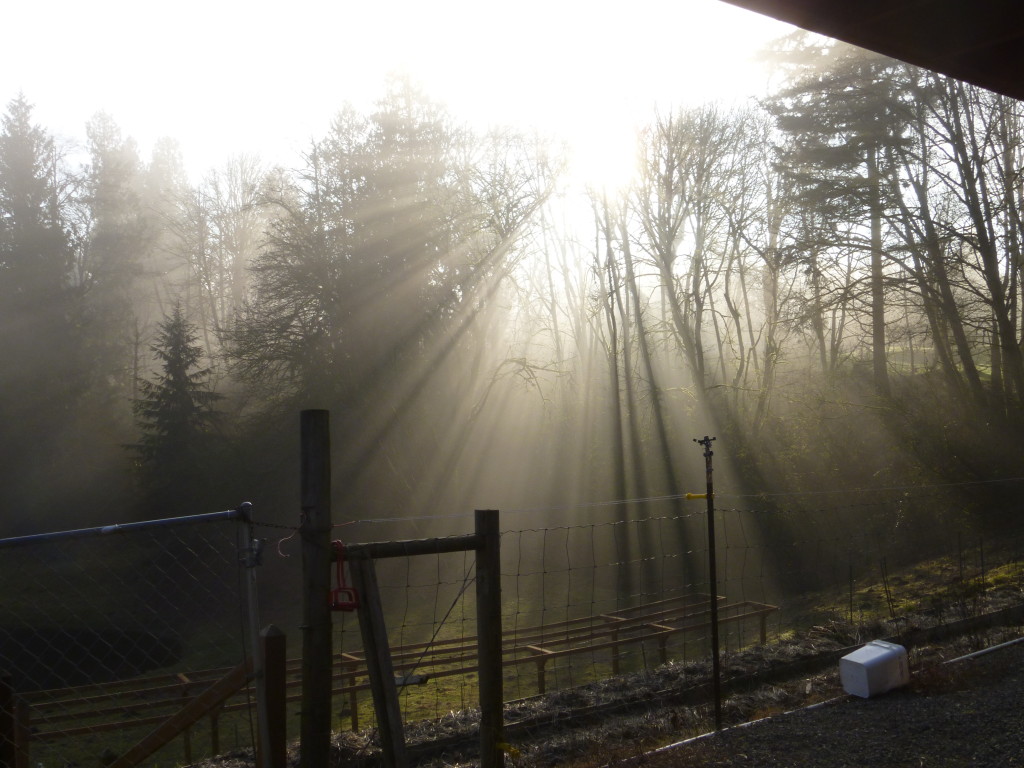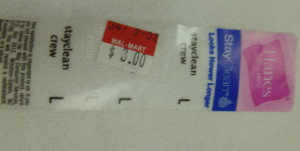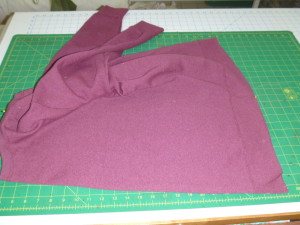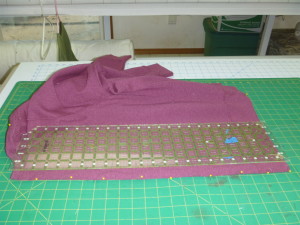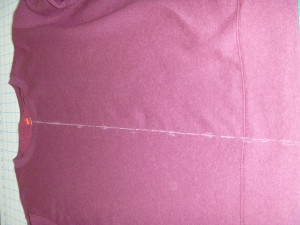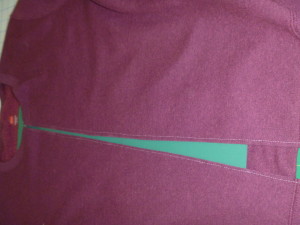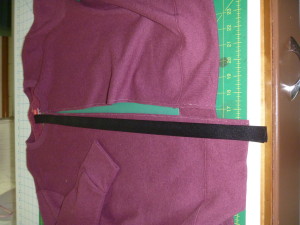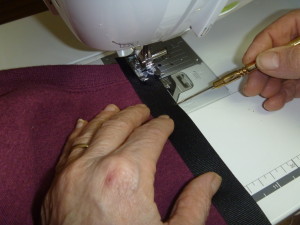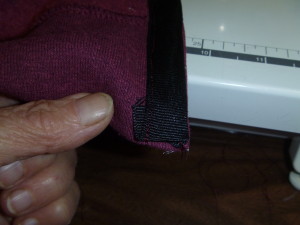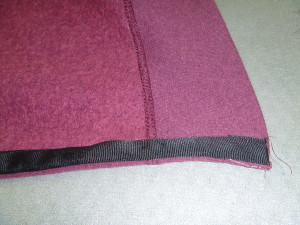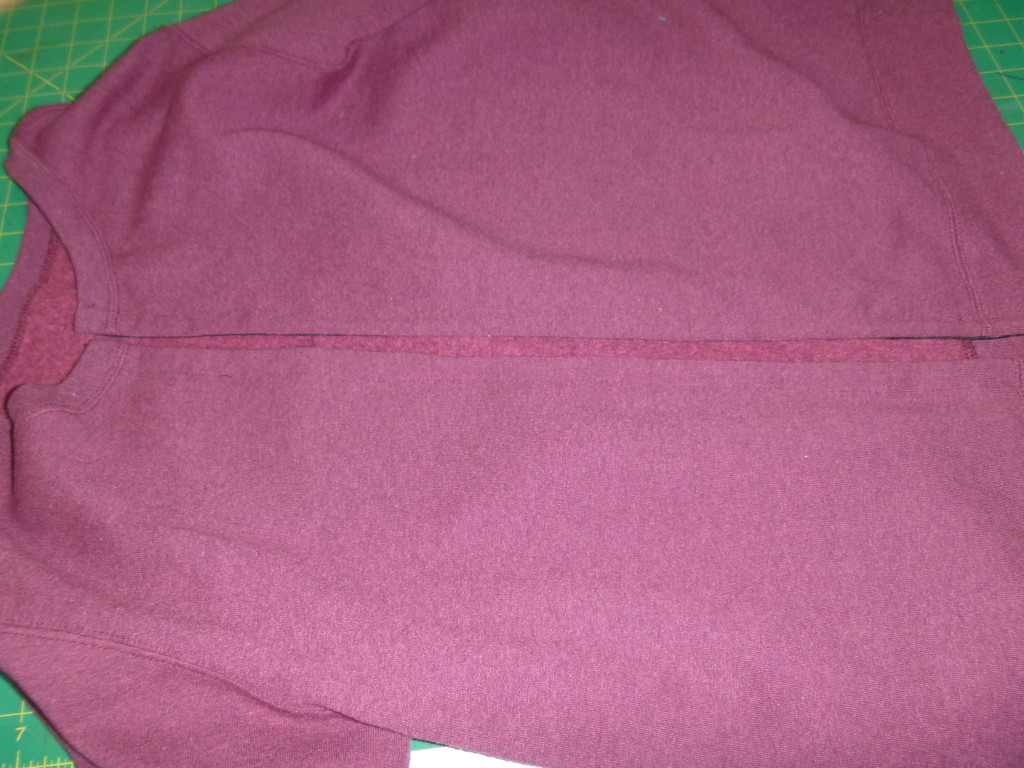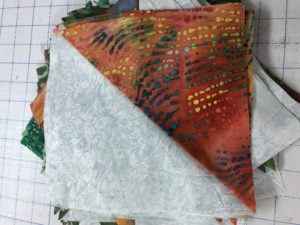
I’m not sure if this is more for me or you. The delectable mountain tutorial was a dry run before I actually cut out my pieces for the quilt.
I started with 8 1/2″ squares cut on the diagonal. In this case I used the same fabric for the light color in each of my blocks. Sew them together and  square them up. This I found to be the most crucial step, because somehow when I sewed those large triangles, they didn’t always come out square. So I squared to 8″. (the rest of these photos is using my practice piece)
square them up. This I found to be the most crucial step, because somehow when I sewed those large triangles, they didn’t always come out square. So I squared to 8″. (the rest of these photos is using my practice piece)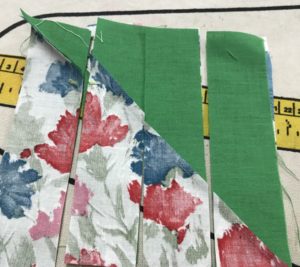 I put 2 of these new squares together with sides reversed and matching the diagonal line, then cut the 8″ pieces into 4 -2″ pieces and
I put 2 of these new squares together with sides reversed and matching the diagonal line, then cut the 8″ pieces into 4 -2″ pieces and 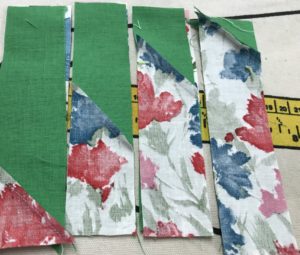 switched the two outside pieces and then the two inside pieces so they now look like this. Because you have cut two of these squares, one is the reverse of the other and can be put together like this
switched the two outside pieces and then the two inside pieces so they now look like this. Because you have cut two of these squares, one is the reverse of the other and can be put together like this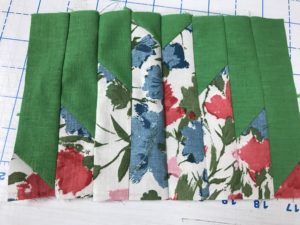 to complete your mountain. If you have trouble visualizing this, you might want to make two squares and try it out first. It makes more sense once you have done it.
to complete your mountain. If you have trouble visualizing this, you might want to make two squares and try it out first. It makes more sense once you have done it.
NEWS ITEM: Meet Paco and Pepita, our latest additions
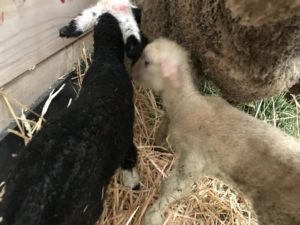 She is white, but she is fresh and not yet dried in this photo.
She is white, but she is fresh and not yet dried in this photo.
